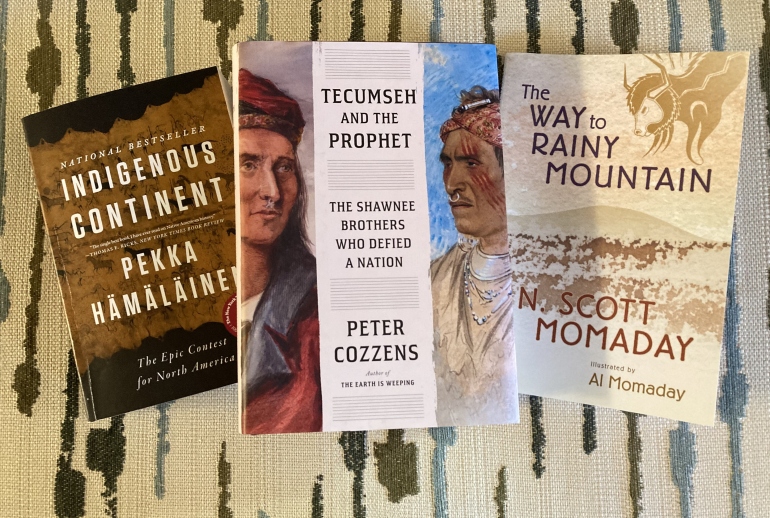Margie and I read a lot, and we occasionally read aloud to each other, and to any guests that happen to be visiting. We also believe in magazines and their ability to introduce us to a variety of issues and topics usually from one primary perspective, even when the author is trying to be objective. So, when we find something that catches our attention for whatever reason we may read a selection of the article to the other. These brief samples are selections you may have heard me read if you were here.
***
Noticed: The phenomenon of Taylor Swift
Suzanne Garfinkle-Crowell, a child, adolescent, and adult psychiatrist in private practice explores in The New York Times the cultural impact of Taylor Swift on today’s young women. As she points out, there have lots of female musicians who have struck a special chord with their audience. But this, she says, is different.
I hope this excerpt induces you to read and think through the entire essay—it’s a keen window of insight into our world. Followers of Jesus will notice the tinge of the messianic here, a sense of community that provides a safe place for listening and a resurgence of hope. To suggest that Taylor Swift is providing soul care that should be the province of the Church is not to denigrate Ms. Swift’s talents and business acumen. It does, however, suggest those of us in the Church needs to examine whether we are faithful in demonstrating the love of God in the gospel.
Swiftmania is a very different kind of high from what I experienced listening to music as a teenager—a high that is worth the pain. It’s not just the plethora of songs to discover but the nonstop Swiftie culture itself—the constant access to the music, the news, the scrolling for swag, the shout-outs on the street, the sharing of songs and lines of poetic code via text or passed bracelet—a party that is raging all day and all night.
When I was growing up, I had the Indigo Girls, Tori Amos and Ani DiFranco, singers for whom a troubled inside matched a raw, edgy outside. But there was nobody who held forth on righteous anger from the inside of a sparkly bodysuit—who suffered as I did but whose confident prowl could make me walk a bit taller. My singers would sit outside the party and complain with you, but when you got your courage up, they weren’t going to go inside, ready for it. Ms. Swift doesn’t force you to choose, because she is both the lucky one you want to be and every bit the antihero you are inside.
Who is the Swiftie? In my practice, these patients share certain characteristics. Raised on a healthy diet of kindness and fairness, she is sensitive, ambitious and a bit of a perfectionist. Like Ms. Swift, she dresses to be pretty and cool (and sometimes for revenge), but inside, she is in all kinds of pain. Her self-doubt perpetuates a vicious cycle in a world where she is timid and young and others may assume she knows nothing. She’s hard-working and frustrated and wonders if she’d get there quicker if she were a man. Desperate to experience love, she has had her moments of begging for Romeo to just say yes and tolerating being treated badly in some situationship. (You said you needed space—what??) And yet the Swiftie strives to be the modern-day Cinderella who doesn’t remember if she has a man. She finds in Ms. Swift an actual hero who meets her where she is but also shows her the badass place she could get to—so intoxicating precisely because it is within reach.
“What would Taylor Swift do?” is a refrain among certain patients in my practice. Teenagers suffer for many reasons. One is being fragile and in formation — a human construction site. Another is being surrounded by others who are fragile and in formation. Ms. Swift articulates not only the treachery of bullying but also the cruelty just shy of it that is even more pervasive: meanness, exclusion, intermittent ghosting. She says: Borrow my strength; embrace your pain; make something beautiful with it—and then you can shake it off.
But what is singular about this artist, in this time, is the access she has created to a cohesive community, particularly for the pandemic generation, whose social connections grew tragically elusive and for whom the internet’s offerings assumed a central role. Whatever you are upset about, the poet laureate of this generation has got a song somewhere in her mega-oeuvre describing that precise feeling. She is not going to solve whatever problem you are having, but she is going to sit with you in it until the passage of time does its work: Look at her now.
You can find Dr. Garfinkle-Crowell’s fascinating essay, “Taylor Swift Has Rocked My Psychiatric Practice” here.
***
Noticed: Bridging political/religious divides
In “Why we shouldn’t lose faith in organized religion,” published in The New York Times (July 9, 2023), Anglican priest and Times columnist Tish Harrison Warren interviewed Eboo Patel, a Muslim and “president of Interfaith America, a Chicago-based nonprofit that aims to promote cooperation across religious differences.” You can read Warren’s Opinion piece here.
Warren: At many interfaith gatherings I’ve been to, I see mainly religious progressives talking about progressive causes. Your organization reaches out to moderate and conservative religious people as well, including white evangelicals. How do you bridge those progressive/conservative divides that seem so deep now?
Patel: It’s actually so much simpler in practice than it is in theory. I’ll give an example: In any hospital in America at any hour, there are people from very different religious identities—a Muslim surgeon with a Jewish anesthesiologist, with a Mormon nurse, with a Jehovah’s Witness social worker, with a Baptist who is sanitizing the room at a hospital started by a Catholic social order like the Dominicans or the Jesuits, that is run by an agnostic who grew up Buddhist. And every single one of them before they walk into a surgery is having their own kind of moment of prayer or reflection or connection with what they call God. That’s what we see as interfaith work.
People from diverse religious backgrounds—who may disagree on some fundamental things about abortion or where to draw the line in Jerusalem or doctrinal matters like the nature of Jesus—who are working together on other fundamental things. That is the genius of American society. We call that civic cooperation. It takes place everywhere all the time.
Think about refugee resettlement. Six of the nine refugee resettlement agencies in America were founded by faith communities. And virtually all of them spend most of their time resettling refugees from a different religion. So you have Jews who founded the Hebrew Immigrant Aid Society, HIAS, in the late 19th century to resettle Jews from Russia. Then, by around the 1970s, most of the Jews who want to be resettled somewhere, whether it’s the United States or Europe or Israel, have been resettled. So does HIAS close? No! They start resettling Cambodian Buddhists. And now they’re resettling Somali Muslims. I think that’s the most inspiring thing in the world. In America, people build institutions—hospitals, social service agencies, colleges, whatever—out of the inspiration of their own faith identity, but the institution serves people of all identities. That is not a common ethos in human history.
But that’s the story of America. That is American pluralism at its best. That is civic cooperation. And I think that we should marvel at that every day.
***
Noticed: Understanding the anger and delight of MAGA
In “The Rage and Joy of MAGA America” (New York Times, July 6,2023), attorney and columnist David French writes about “What outsiders often can’t see about the appeal of Trumpism.” You can read French’s interesting piece here. It’s a thoughtful article, exploring an aspect of the MAGA movement that has not been sufficiently appreciated or considered, especially by those who are not part of it. This aspect is how a movement that exudes and encourages so much hate and anger can be such a delight for its members as a community. This paradox, French argues, it a primary reason why reasoning about political / ideological issues and policies with MAGA adherents is pointless. “Can something be cheerful and dark at the same time?” he asks. He answers, “Yes.” And that unless we understand this dualistic, seemingly contradictory dynamic we will not understand our neighbors who have been caught up in the lies and exclusionary vision of MAGA.
Why do none of your arguments against Trump penetrate this mind-set? The Trumpists have an easy answer: You’re horrible, and no one should listen to horrible people. Why were Trumpists so vulnerable to insane stolen-election theories? Because they know that you’re horrible and that horrible people are capable of anything, including stealing an election.
At the same time, their own joy and camaraderie insulates them against external critiques that focus on their anger and cruelty. Such charges ring hollow to Trump supporters, who can see firsthand the internal friendliness and good cheer that they experience when they get together with one another. They don’t feel angry—at least not most of the time. They are good, likable people who’ve just been provoked by a distant and alien “left” that many of them have never meaningfully encountered firsthand.
Indeed, while countless gallons of ink have been spilled analyzing the MAGA movement’s rage, far too little has been spilled discussing its joy…
Trump’s fans, by contrast, don’t understand the effects of that fury because they mainly experience the joy. For them, the MAGA community is kind and welcoming. For them, supporting Trump is fun. Moreover, the MAGA movement is heavily clustered in the South, and Southerners see themselves as the nicest people in America. It feels false to them to be called “mean” or “cruel.” Cruel? No chance. In their minds, they’re the same people they’ve always been—it’s just that they finally understand how bad you are. And by “you,” again, they often mean the caricatures of people they’ve never met.
***
Noticed: Growing interest in Tarot
Most “Nones” I know may have walked away from the Church and the Christian faith, but they remain on a spiritual journey. They are still searching for truth, for meaning, for a true spirituality, for what it means to flourish as a human being in a broken world. One expression of this journey of exploration by some is a growing interest in Tarot.
In a fascinating feature article in The Christian Century (May 2023) the Century’s associate editor, Jessica Mesman, explains the attraction, provides some surprising history, insight, all suggesting the evangelical instant rejection (occult!) might be an overreaction. “The Woman Behind Tarot’s Strange Beauty,” can be read here.
The history of tarot is hard to pin down, but it probably originated in 15th-century Italy as a strategy card game of trumps. Only later did the cards become a spiritual tool, used for both contemplation and divination. The trump cards became the 22 cards of the Major Arcana: the Fool, the Magician, the Empress, the High Priestess, the Hierophant, the Lovers, the World, and so on. The remaining 56 cards are called the Minor Arcana and include suits of swords, cups, wands, and coins.
To read tarot yourself, you typically begin by praying or meditating with a specific question in mind, and then you draw the cards and contemplate what the symbols and imagery might suggest to the problem at hand. You might use a guidebook, your own intuition, or both. You might pull just one card, or you might create an elaborate pattern that covers your whole table. A typical three-card draw assigns one card each to your past, present, and future. Another formula assigns a card to the situation, one to the obstacle, and one to the solution. In my experience, there doesn’t have to be any magic involved—not in the sense of manipulation of supernatural power—nor any extrasensory perception. Some creativity is required, however. The cards lend themselves to story, as Italo Calvino demonstrates in his 1969 book The Castle of Crossed Destinies, in which he uses tarot cards to tell a series of fantastic tales.
Say you pull the seven of swords and the Magician reversed, a combination that came up for me in one of my first readings, for which I consulted a professional reader at a folding table in New Orleans’s French Quarter. “You’ve been lied to,” the reader said. The swords indicate deception. The Magician, when drawn upright, can symbolize God or divine power. Upside down, the card suggests manipulation and dirty tricks. This reading was relevant to the question I’d posed in my head—so much so that I gasped at the accuracy.
But was that in any way magical or supernatural? Haven’t we all been lied to and manipulated at some point in our lives? The cards could be simply an aid for thinking through what we have learned from such experiences. Whether we find relevance in the story they tell is largely up to us. Or maybe magic isn’t what you’re thinking it is, sniffed my friend Joanna, a poet and tarot aficionado. This kind of negativity is probably what led another professional tarot reader to tell me my energy was so bad he couldn’t read for me, then spritz me with rose water.
But whether you are using the cards for magical practice and divination or prayer and contemplation, the occult is an important part of tarot’s history, and that alarms many Christians. Before the Satanic Panic and especially prior to the 20th century, the word occult did not have quite the same sinister connotation, though it was always a magnet for eccentrics. Occult could refer to any spiritual practice that drew from “secret” teachings or wisdom passed down from sages; its experiments often overlapped with mathematical and scientific exploration and with esoteric Christianity. Antoine Court de Gébelin and Éliphas Lévi, two important figures in the development of occult tarot practices, were both Christian mystics.
***
Author’s Note: This is my seventh collection of short extracts worth reading aloud. If you’d like the read the earlier ones, you can find them on this website at these links: Sundry (1), Sundry (2), Sundry (3), Sundry (4), Sundry (5), Sundry (6).
Photo credit: Photo by Huỳnh Đạt: (https://www.pexels.com/photo/books-on-shelves-2177482/)



